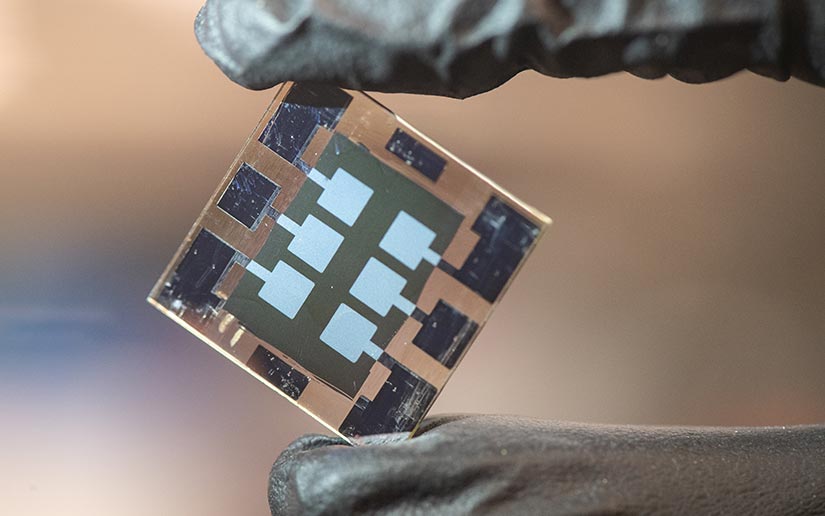Perovskite solar cells have been the subject of intense research in recent years due to their high energy conversion efficiency and low production cost. They are a type of thin-film solar cell made using a material called perovskite, which has the chemical formula ABX3.
In the formula A represents a small organic molecule or metal cation, B represents a metal cation, and X represents a halide ion such as iodide or bromide. The perovskite material has unique properties that make it ideal for use in solar cells, including its ability to absorb a wide range of wavelengths of light and its high charge carrier mobility.
Perovskite solar cells have achieved record-breaking efficiency levels in a relatively short period of time. In 2009, the efficiency of the first perovskite solar cell was reported to be only 3.8%. As of 2018, this has increased to over 23%, which is close to the efficiency of conventional silicon-based solar cells. Researchers continue to work on improving the efficiency of perovskite solar cells and reducing their production cost, with the ultimate goal of making them a commercially viable alternative to silicon-based solar cells.
A major advantage of perovskite solar cells is their low cost of production. The materials used to make perovskite solar cells are relatively cheap and easy to obtain, making them an attractive option for large-scale solar panel manufacturing. Furthermore, perovskite solar cells can be manufactured using simple and scalable solution-based processes, which are much less complex than the high-temperature and high-vacuum processes used to make silicon-based solar cells. and are expensive.
Another advantage of perovskite solar cells is their flexibility. Because they are made using thin-film technology, they can be made into flexible and lightweight solar panels that can be used in a wide range of applications, including portable electronic devices and wearable technology. This makes them ideal for use in remote or off-grid locations where conventional solar panels may not be feasible.
Despite their many advantages, perovskite solar cells are still relatively new and have some challenges that need to be addressed before they can become a mainstream technology. One of the biggest challenges is their stability. Perovskite materials are inherently unstable, especially when exposed to moisture or oxygen, which can lead to degradation and decreased performance over time. The researchers are working on developing more stable perovskite materials and improving the encapsulation techniques used to protect the cells from environmental factors.
Another challenge is the scalability of perovskite solar cell production. While the solution-based processes used to make perovskite solar cells are simple and scalable, there are reproducibility and yield issues that need to be addressed before they can be mass-produced. Furthermore, the long-term durability and reliability of perovskite solar cells are still unknown, which may limit their commercial viability in the future.
In conclusion, perovskite solar cells have the potential to revolutionize the solar power industry by providing a low-cost, lightweight and flexible alternative to conventional silicon-based solar cells. While there are still challenges that need to be addressed before perovskite solar cells can become a mainstream technology, researchers are making significant progress in improving their efficiency, stability and scalability. With continued research and development, perovskite solar cells can play an important role in meeting the world's growing energy needs in a sustainable and environmentally friendly manner.






0 comments:
Post a Comment